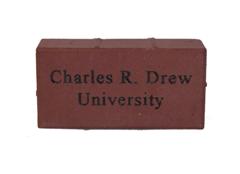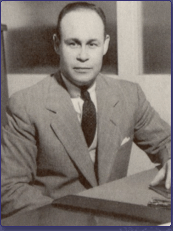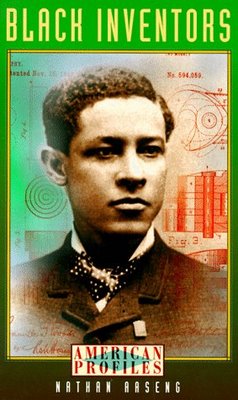 Charles Richard Drew (1904 - 1950)
Charles Richard Drew (1904 - 1950)The Father Of The Blood Bank
Charles Richard Drew made an incredible contribution to the world of medicine in his relatively short life.
If you or someone you love has ever needed a blood transfusion it is Charles Richard Drew you have to thank for the processes and organisation that have made it possible. He is the father of the blood bank.
He was such an important influence that there is now a medical school to train doctors in Los Angeles named after him.
He was born in Washington D.C. in 1904. Although at that time segregation and prejudice were still rife, his parents, Richard and Nora, were determined that their son would grow up knowing that hard work and a good education were very important.
Richard Thomas Drew told his children:
"Do what you believe in. Take a stand and don't get licked."
Charles was soon found to be a very brainy school student, but he was also a really talented athlete, and could have chosen to be a professional athlete or American footballer, but he was more interested in becoming a doctor, especially after his sister died of tuberculosis.
(Charles R. Drew University Of Medecine And Science(Klick mich an...!))
 Using his sporting prowess to gain a scholarship, he went to Amherst College in Massachusetts in the USA to study science and maths. After that he went to his second choice of university, McGill in Canada. He would have gone to his first choice, Howard University, but he didn’t have two vital credits in English!
Using his sporting prowess to gain a scholarship, he went to Amherst College in Massachusetts in the USA to study science and maths. After that he went to his second choice of university, McGill in Canada. He would have gone to his first choice, Howard University, but he didn’t have two vital credits in English!Once more he shone academically, and in 1934 he graduated second in a class of 137 with a Master of Surgery and Doctor of Medicine Degree. He worked at the Royal Victoria and Montreal General hospitals and this is where he first started to become interested in blood. It had only been 30 years before that the different blood types had been discovered, and safe blood transfusions became widely used. Now the holy grail of blood science was to be able to store blood for transfusions.
 Charles knew he wanted to research blood further and applied for several positions in hospitals in the USA. He encountered discrimination because he was black and was not offered the positions he wanted. But being Charles, he didn’t give up and eventually applied to the University that had once turned him down, Howard University, where he had to make do with teaching Pathology for the time being. He never gave up on his goal of researching blood, and eventually got a Fellowship to research at the Columbia Medical School in New York.
Charles knew he wanted to research blood further and applied for several positions in hospitals in the USA. He encountered discrimination because he was black and was not offered the positions he wanted. But being Charles, he didn’t give up and eventually applied to the University that had once turned him down, Howard University, where he had to make do with teaching Pathology for the time being. He never gave up on his goal of researching blood, and eventually got a Fellowship to research at the Columbia Medical School in New York.He found out that if you separate the red blood cells from the plasma you can store the plasma separately, and it lasts much longer that whole blood, and what’s more you don’t have to know the blood type of the plasma, as it can be used to save any life in an emergency. He found you can even dry the plasma for travel, mixing it with water to use it when it’s needed. So he became the world expert on blood of his day, and a good thing too because over in Europe the Second World War was underway and blood was desperately needed on the battlefields and on the home front in Great Britain.
Because he was the expert, he was asked by the American Red Cross and the R.A.F in Britain to lead the initiative to get much needed blood from the USA to American and British soldiers. He proved to be a great leader and organiser and turned his scientific research into practical genius resulting in the first ever blood bank. There is no doubt that his discoveries and brilliant ability to manage this amazing project saved many thousands of lives during the war years, and became the foundation of the blood service we know today.
wonder what inspired him?
Charles knew, as any educated person did, that there was no difference in the blood of black and white people, and yet the US War Department sent a directive along these lines...
 Charles naturally was livid and denounced the directive as ‘unscientific’. He said:
Charles naturally was livid and denounced the directive as ‘unscientific’. He said:"I feel that the recent ruling of the United States Army and Navy regarding the refusal of colored blood donors is an indefensible one from any point of view. As you know, there is no scientific basis for the separation of the bloods of different races except on the basis of the individual blood types or groups."
He resigned. He was of course right, and soon after his resignation other scientists confirmed his theory that blood from different races is the same, where upon African American people were allowed to donate again though their blood was stored separately.
He spent the next ten years as chief of staff at the Freedman’s Hospital and devoted his work to training a whole generation of black doctors and surgeons. He also married and had four children. His renown in his own lifetime was very great. His philosophy was that:
"There must always be the continuing struggle to make the increasing knowledge of the world bear fruit in increased understanding and the production of human happiness."
Sadly his life and work were cut short in 1950 when he was fatally injured in a car crash, but his name and work live on in the Charles Drew University of Medicine and Science founded in 1966 in the heart of South Central Los Angeles.

Quelle: BBC/Planet-Science.Com
![BOIS-CAIMAN-1791-CLUB [the african memory]](https://blogger.googleusercontent.com/img/b/R29vZ2xl/AVvXsEjthfqy-hYzHw7sv58_RVCAameV_WrAgeWBzAhb5XeeFpM9EQegROHsrbJriUiTEbev2AudKEXMVqS4mZLgE3bgcQ6mNUNWzvXUhyphenhyphen-ugR-pL7ymfmq4WxS1dfBAtcPJFANmmtZZrVlYeFgx/s963/BannerBEST-aktuell----.gif)












































0 Kommentare:
Kommentar veröffentlichen